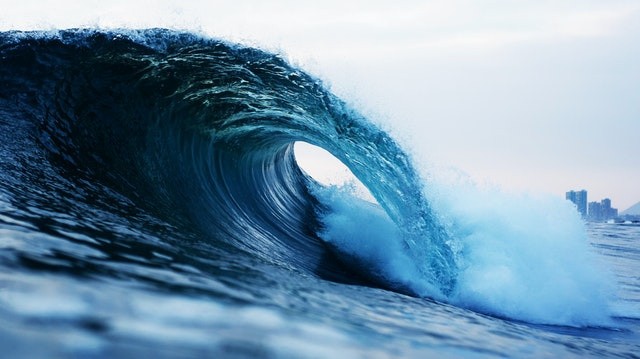Biogeoscientists have recently opened up new possibilities for life in the dark, at the bottom of the oceans of Earth, as well as in other places in the solar system.
A Brinkwire report specified that biogeoscientists Jeffrey Dick and Everett Shock found that specific hydrothermal seafloor settings offer a unique habitat where some creatures can survive in recently published research.
Essentially, underwater fissures identified as hydrothermal vents, house multifaceted ecosystems of life in the odd, dark environs of the ocean underneath.
The chemical pressures needed for microscopic organisms to survive in this severe so-called "severe environment" are made by such vents, emitting blazing hot fluids into tremendously cold seas.
ALSO READ : Submarine Collided with Unknown Underwater Mountain in the South China Sea Incurring Damages, What Is This?

Cellular Respiration
The study titled, The Release of Energy During Protein Synthesis at Ultramafic-Hosted Submarine Hydrothermal Ecosystems, was published in the Journal of Geophysical Research Biogeosciences.
As specified in this report, on land, organisms can obtain energy from the food they eat through a process also called "cellular respiration," which comprises the breathing in of oxygen, and the exhalation of carbon dioxide.
The chemicals found in food are biologically unsteady in the presence of oxygen. In this variability, the cells are used to grow and reproduce, a process identified as biosynthesis. On the other hand, such conditions for life on the bottom are extremely different.
According to Everett Shock, co-author of the study from Arizona State University's School of Earth and Space Exploration and the School of Molecular Sciences, many people know that constructing life's molecules need energy on land, in the atmosphere, and on Earth that's rich in oxygen.
Igneous and Meta-Igneous Rocks
On the contrary, hot fluids are interacting with very cold saltwater around hydrothermal vents on the seafloor to develop conditions where creating life molecules generates energy.Organisms flourish close to vents where hypothermal fluid is mixing with ambient saltwater in deep-sea bacterial habitats.Since igneous and meta-igneous rocks with extremely low silica content or ultramafic rock are producing the most hydrogen, previously conducted research led by Shock discovered that the "biosynthesis of basic cellular blocks like and sugars" is specifically favorable in sites where the vents are composed of igneous and meta-igneous rocks with extremely low silica content.Cells need larger molecules or polymers, also called biomacromolecules, on top of basic ingredients such as amino acids and carbohydrates.
2 Contradicting Energy Flows
Essentially, proteins are most typical of such molecules in the cells, and the polymerization reaction, in which tiny molecules are uniting for the formation of a larger biomolecule, requires energy in practically every situation.
SciTechDaily said in a similar report that, Dick, who was a postdoctoral scholar at ASU when this study started and is presently a geochemistry researcher in the School of Geosciences and Info-Physics at Central South University in Changsha, China, explained that "where there is life, there is water."
He added that there is a need for water to be driven out of the system for polymerization to turn favorable.
Therefore, he continued explaining, there are two contradicting flows of energy: the energy released by biosynthesis of basic building blocks, and the energy needed for polymerization.
Related information about life at the bottom of the seafloor is shown on Vice Asia's YouTube video below:
RELATED ARTICLE : Great White Sharks Found Exfoliating Leerfish in Plettenberg Bay; Spa Treatment in South Africa More Common Than First Thought
Check out more news and information on Ocean in Science Times.










